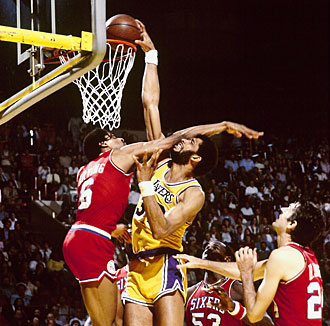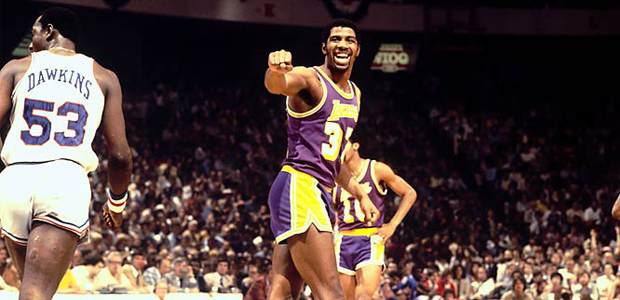The Book of Genesis, the first book of the Holy Bible, is the most famous creation story known to humankind, since human beings began to write letters on paper.
Other cultures and civilizations have their own revered texts and shared origin stories. A lucky few are present at the creation of something vast, remarkable, formidable, or all of the above, but most of us must settle for the secondhand account: the telling of what it was like to be there in the moment.
By reading, seeing or hearing, we are transported to that point in the past when something special, memorable, and highly influential came into being.
In the history of the NBA, many legendary origin stories have been authored.
The 1990s Chicago Bulls wrote their origin story in Auburn Hills, Michigan. The Palace was the site of Scottie Pippen’s mentally frail Game 7 against the Detroit Pistons in that year’s Eastern Conference Finals. From the ashes of that disappointment rose a phoenix, a bird which took wing primarily because of Michael Jordan, but also because Pippen grew up… and grew into a Hall of Fame player in his own right. The Bulls would win six championships, but not after Pippen learned how to compete in 1990.
The Pistons team which beat the Bulls in 1990 (and in 1989) first had to lose at a high level as well. One point away from dethroning the Los Angeles Lakers in Game 6 of the 1988 NBA Finals — and jobbed by a bad foul call in the final minute on Bill Laimbeer against Kareem Abdul-Jabbar — the Pistons were denied in Game 7 in their first Finals visit. Fueled by the depths of that shattering disappointment, the Pistons came back better than ever in 1989 and won back-to-back championships. That’s no ordinary origin story, either.
The Boston Celtics’ first origin story began with Bill Russell and Red Auerbach in the 1950s. That story was less about the overcoming of hardships — or the ability to stand against the current of a bitter history — than it was a story of pioneering. The Celtics of that era became the first great NBA team of the shot-clock era. (The Minneapolis Lakers were the first great NBA team, period, but before the shot clock came into being.) The Celtics in many ways taught the rest of the league how to play the modern game.
The Celtics’ second origin story is more special. A man from French Lick, Indiana — a place very different from Boston — revived the franchise after John Havlicek hung up his sneakers, Jo Jo White’s Hall of Fame career had begun to decline, and Dave Cowens wound down the clock on his own Hall of Fame journey as a player. In 1980, Larry Bird led the Boston Celtics to the Eastern Conference Finals, but the Philadelphia 76ers — with Julius Erving, Bobby Jones, Maurice Cheeks, Lionel Hollins, and the man who died on Thursday, Darryl Dawkins — wiped out the Celtics in five games. From that defeat, Bird would wage a constant battle with the Sixers in the first half of the 1980s. It brought one championship in 1981 but then two more in 1984 and 1986. Bird and the Celtics flew higher than those great Sixer teams of the time. The Hick re-energized The Hub, making Boston the center of the NBA when the 1986 season came to a close.
Origin stories generally do acquire some kind of mythic quality, the dimensions of a tale larger than life, in the NBA or anywhere else.
Among the many origin stories presented above, though, none of them might top the one authored by a team which eventually became even greater than the 1980s Boston Celtics: the 1980s Los Angeles Lakers.
*
First of all, read Crossover Chronicles writer Joseph Nardone’s piece on Game 6 of the 1980 NBA Finals. Then read our look at Game 5 of the 1980 Finals, part of a larger piece on Game 5s of 2-2 Finals series over the past 35 years.
Those two pieces speak for themselves and give you the details of those two games, in one of the most important and revolutionary seasons in NBA history. (Stop for a moment and realize everything — and everyone — that came into the NBA during the 1979-1980 season: the three-point line, yes, but also Pat Riley as a Laker assistant coach, setting the stage for his rise to the top spot two seasons later; Bird and Magic; and ESPN. Other than that, not much…)
What follows is not a very lengthy commentary — it’s actually going to be quite brief — but the enormity of what it points to is something that might ambush you and blow you away:

You try dunking over Doctor J… in the final 40 seconds of a 103-103 Game 5 in a 2-2 NBA Finals… on a severely sprained ankle. Kareem Abdul-Jabbar did.
In the history of not just professional basketball, but all of competitive sports, think about the very idea of two of the five greatest players to ever play a sport, on the same team, playing their very best games in back-to-back games. Moreover, think about the very idea of those two all-time “best of the best” legends playing their best games back-to-back IN THEIR SPORT’S CHAMPIONSHIP SERIES.
That’s how the 1980s Laker dynasty was born, folks.
For all the great things they did throughout the 1980s and in the rest of their immeasurably immortal careers, Kareem Abdul-Jabbar and Magic Johnson — one could argue — played their very best games and enjoyed their finest single hours as NBA legends in Games 5 and 6 of the 1980 NBA Finals. Kareem’s ability to control the fourth quarter of Game 5 on his bad ankle, followed by Magic’s 42-15-7 line in Game 6 a few nights later in Philadelphia, with “The Captain” trying to recover for Game 7 at home, represent THE best single-game performances from both men, never to be topped.
With Magic, there is no dispute that 42-15-7 will always be his magnum opus. With Kareem in Game 5 of the 1980 Finals, there’s room for debate, given his 30-17-8-3 line in Game 2 of the 1985 Finals against the Boston Celtics, or his ridiculous long skyhook in Game 6 of the 1974 Finals for the Milwaukee Bucks, also in Boston Garden against the Celtics.
Yet, it’s certainly more than reasonable to say that under the circumstances — akin to Isiah Thomas scoring 25 points in the third quarter of Game 6 of the 1988 Finals against Kareem and the Lakers, also while hobbling — Kareem’s best game was in fact Game 5 in 1980. If you agree with that claim, then two of Joe Manganiello’s five best NBA players of all time maxed out in consecutive Finals games, closing out the series and winning a world title.
Has a better NBA origin story been authored since the league came into existence in the 1940s?
Maybe… but only Don Draper might be able to sell the argument. Moreover, Don would have to find a story which can come reasonably close in the first place.
Magic and Kareem, two of the five best players in NBA history, set the highest of standards throughout their careers. That those standards converged in the same series during the same week, in consecutive games, culminating in a locker-room celebration in Philadelphia, truly makes these men — and their careers — stand apart.

